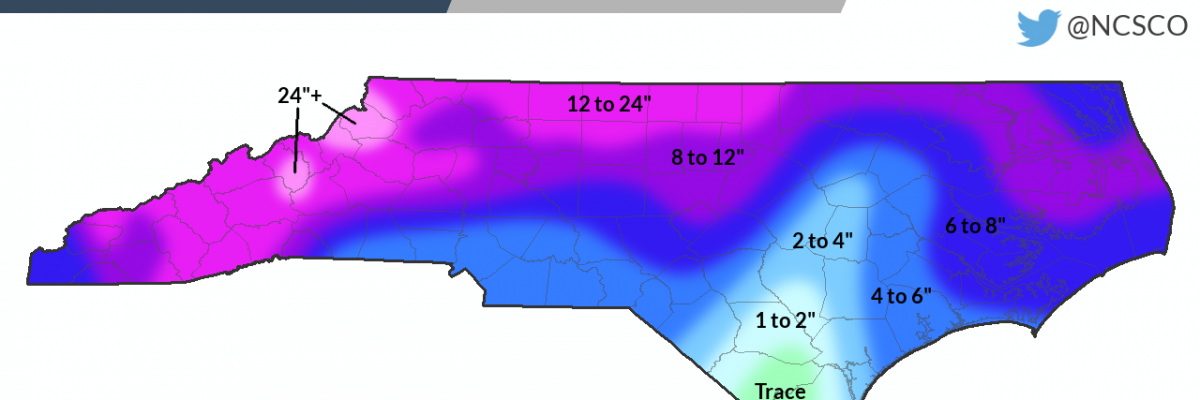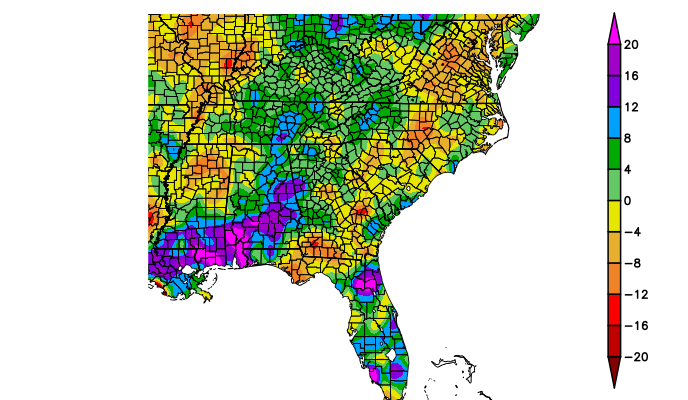Climate summaries
-

With just a day or two to go, the statistics for March 2018 show that for most of the region, temperatures will end up well below normal. Only the far western parts were above normal. In fact, a lot of the region was colder in March than it was in February. A good part of…
Posted in: Climate summaries -

The State Climate Office of North Carolina has released their recap of the winter of 2017-2018. You can find it at https://climate.ncsu.edu/climateblog?id=256&h=5666e5c1.
Posted in: Climate summaries -

Every month I post maps and links to the latest seasonal forecasts from NOAA’s Climate Prediction Center. Most of you read them, and some of you even believe them. Here in the Southeast we generally have a better chance of skill because our winter climate is tied to the ENSO phase (currently coming out of…
-
The latest summary of global climate was released by NOAA this week. It covers both February and the winter period from December 2017 through February 2018. The data show that for the globe as a whole in February, it was the coolest since 2014 but the 11th warmest since records began in 1880. The winter…
Posted in: Climate summaries -

The Southeast Regional Climate Center has published their latest seasonal climate summary for the Southeast. You can view the two-page fact sheet at https://www.sercc.com/Southeast_Region_Quarterly_Report_Winter_2017_2018.pdf.
Posted in: Climate summaries -

On Tuesday, March 20, at 11:00 am EDT I am giving a webinar/training class to UGA extension agents which includes a climate summary for 2017 and an outlook for the 2018 growing season. If you are interested, you are welcome to join the Zoom meeting by computer or telephone. Details for attending the meeting are…
-

Every month NOAA publishes a monthly climate summary which contains information about the ranking of temperature and precipitation by state, climate division, and region as well as statistics on how warm or cold, wet or dry each region is. But there is a wealth of additional information you might not know about. Deke Arndt of…